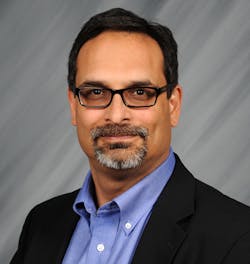Since the industrial revolution, industrial control has relied on tightly coupled systems to transmit control signals. Industrial plants have used "modern" control via wired electronic signals for over half a century, making the market ripe for a new technology to disrupt the current methods.
Advances in wireless technologies now promise to disrupt that paradigm, and sooner rather than later. Given the ever-increasing rate of development (and the increasing need to connect previously stranded assets), wireless technologies are on the cusp of fulfilling an entirely new range of industrial control applications.
Since its beginning, industrial control has mainly relied on tightly coupled linkages between the field devices and the control mechanisms. In earlier times, this coupling was accomplished mechanically or pneumatically. More recently, industry employed wires to convey electrical signals. In fact, most control performed in manufacturing facilities today uses wires to convey signals to and from the field. This generally involves a 4-20 mA signal generated by a measurement device in the field to transmit a process state to the controller, followed by another 4-20 mA signal generated by the controller to convey a desired response to a field actuator.
Nearly 20 years ago, Foundation fieldbus technology led the process industries into the concept of “control on the wire.” The concept leverages the higher processing power available in digital (rather than analog) field devices to execute control algorithms and increased speed of digital communications. For example, a digital flow transmitter could execute a PID algorithm based on its own measurement and transmit a control signal to a valve on the same segment. Despite tighter and more robust control and a more reliable setup, only a handful of end users (estimated at less than 5 percent) have capitalized on this aspect of the technology.
Wireless signals are generally not employed for control because the sample rates are too long and the signal reliability typically below expectations. PID algorithms expect to sample the field signal at least four times per algorithm execution. When the sample rates are increased on wireless devices, the battery life drops rapidly. This is exacerbated by the generally less-than-ideal reliability of wireless transmission itself. Although wireless mesh technology has improved greatly, applications must still be able to tolerate a loss of signal.
The foundations are set. Wireless standards are fairly well agreed upon, with committees working on convergence. This allows suppliers to focus development to a specific standard without the overhead of having to support multiple standards.
Energy harvesting allows wireless transmitters to use “free” energy from the surrounding environment to augment the power to the device. These devices convert vibration, solar or thermal energy into electricity to power wireless devices in locations where line power is not available. In some cases, the wireless device works totally off the energy harvester and uses the battery only for backup.
A leading global automation supplier recently announced that it has developed an augmented PID algorithm to handle the longer sample rates and uncertainty in communication associated with wireless process variables. The new algorithm has added signal conditioning to handle this longer sample time. The company donated the patent for the new algorithm to the FieldComm Group, which means that control can be implemented using wireless input signals and the technology can be licensed from the same organization responsible for Foundation fieldbus.
As with many new developments for the industrial world, efforts to extend battery life continue to be propelled by advances initially developed for the consumer market. These advances will enable faster wireless communication between field devices without concern for battery life and associated maintenance. When coupled with increasingly efficient energy harvesting, battery life may cease to be an issue in the near future.
When considering the amount of development dollars being invested in wireless vs. wired technologies, end users should expect wireless to quickly become faster, more reliable, more fault tolerant, and more energy efficient. WirelessHART currently claims 99.9 percent end-to-end reliability. Suppliers that support the ISA 100 wireless standard also report increasing reliability. ARC Advisory Group believes that wireless technology will not only get better, it will become easier to implement and use.
Is control in the wireless mesh realizable? ARC believes that the answer is yes. Although wireless communication reliability is still somewhat questionable, the building blocks are in place to alleviate these concerns.
>> Mark Sen Gupta, [email protected], is senior consultant at ARC Advisory Group. He has more than 24 years of expertise in process control, SCADA and IT applications with companies such as Mobay, Honeywell, Plant Automation Services (PAS), CygNet Software and Invensys. He holds bachelor’s and master’s degrees in electrical engineering from the Georgia Institute of Technology.

